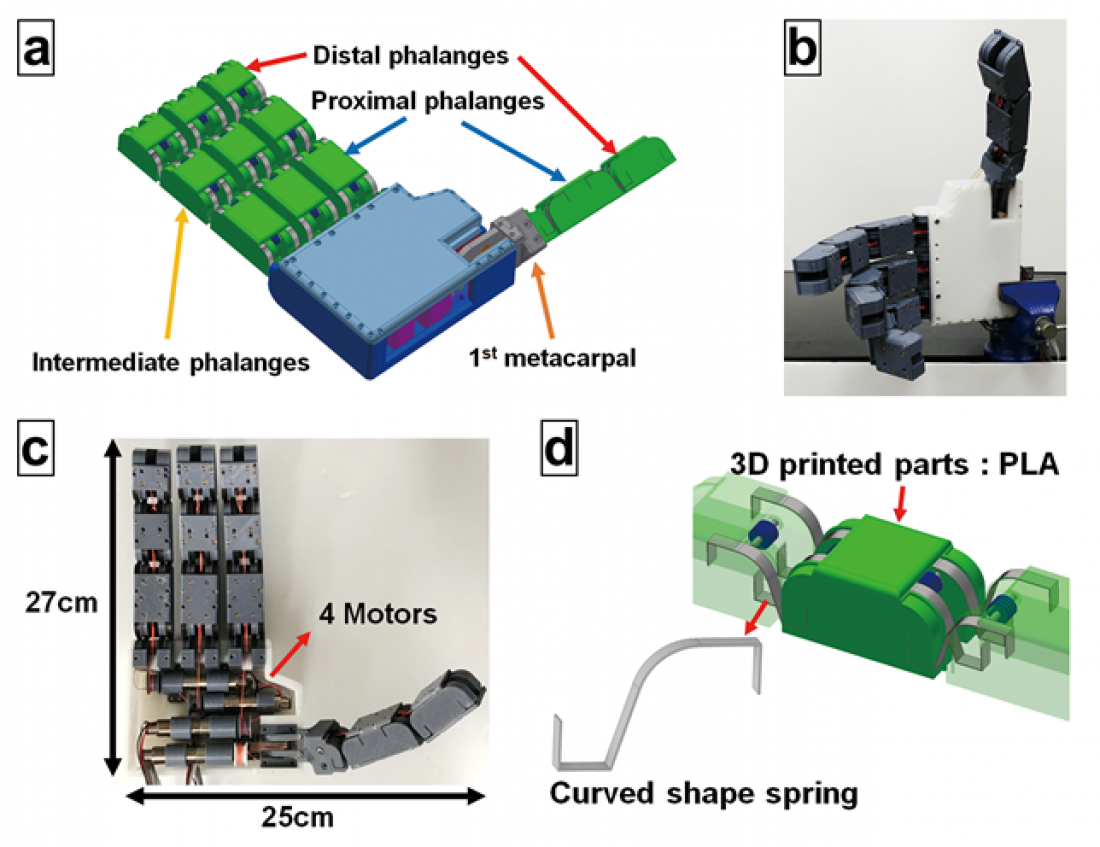□ The paper on the core technology achievement of the “robot hand”, which is as delicate and flexible as a human hand, by the research team of Professor Dongwon Yoon from the Department of Robotics and Mechatronics in DGIST (President Yang Kook) was selected as the cover of the 10th anniversary edition of the International Journal, “Soft Robotics.”
□ This selection as the cover paper reflects significant and impactful research progress and represents official recognition of the excellence in the research results. Particularly, as this issue is the 10th anniversary edition of Soft Robotics, selecting a domestic research paper as the cover is highly meaningful.
□ Professor Dongwon Yoon’s research team from the Department of Robotics and Mechatronics in DGIST established a “robot hand,” that is as delicate as a human hand in 2021. The “robot hand” is mainly used for advanced tasks, such as grasping and assembling objects of various shapes and stiffnesses, across various industrial sites. A ball bearing swivel joint based on a rolling bearing[1] is mainly used for the operation of this robot hand; however, its cost is high and the assembly is tricky. Thus, various flexible joints are being developed to replace this joint because it is also prone to failure due to external impact and may damage objects.
□ Thus, Professor Dongwon Yoon’s research team intended to reinforce the weak stiffness of the structurally flexible robot hand by applying four flexure hinges morphed to fit the fingertips and by arranging the two pairs in a cross to form an X shape. Consequently, they demonstrated that the robot hand absorbed 46.7% more impact than previous bearing-based robot hands. Additionally, they deduced that grasping various unstructured objects could be achieved with higher reliability. Further, the shortcoming of previous soft robots with a low transportable load could be overcome, and this robot hand could grasp up to 4 kg.
□ Professor Dongwon Yoon from the Department of Robotics and Mechatronics in DGIST stated “we are very pleased that our research progress, published in 2021, was selected as the cover page of the number one journal in the field of soft robots for their 10th year anniversary edition,” and “we are working to make this technology practical for industrial sites and the field of soft robots.”
□ Meanwhile, DGIST Robotics and Mechatronics major Junmo Yang, an integrated Master’s and PhD student, and Master’s Graduate Jungeok Kim jointly participated as co-authors; this research was supported by the National Research Foundation of Korea as an emerging research support program. Relevant research was published online in 2021 in the Soft Robotics Journal, and it was officially published in 2022.
Correspondence Author E-mail : [email protected]
[1] Rolling bearing: Balls, rollers, or needles are included in the contact interface of the bearing and they make contact as the roller rolls; thus, friction is low and the bearing is suitable for high-speed rolling.



